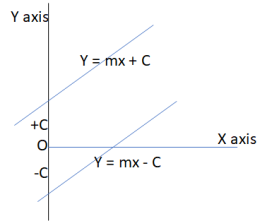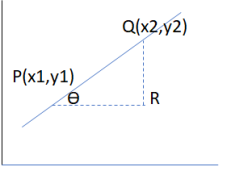There are 365 days to all the JEE participants while few will succeed and many others not. Though all of them have a same amount of time for JEE preparation. Many aspirants attribute this to brilliance, talent etc. while I strongly beg to differ here. Yes, I agree that brilliance matters but its not the only thing instead its just one of the factors. A large part of success comes from how an aspirant study the subjects and grasp the main elements of the topic. Here lies the trick which I am going to explain you in this article.
Ever heard of Elon Musk? He is the 40th richest person on the earth and an engineer by profession. He owned the companies like SpaceX and Tesla and many more. He achieved so many things in a short span of life, someone asked him how he learns about so many different concepts (Rocket Science, Automobile Engineering etc.) quickly? His reply is below:
“One bit of advice: it is important to view knowledge as sort of a semantic tree — make sure you understand the fundamental principles, i.e. the trunk and big branches, before you get into the leaves/details or there is nothing for them to hang on to.”
Let me not confuse you too much with above. Essentially Elon is telling in short that what matters is understanding the basics or fundamentals of the topic and one should not worry too much about its branches or associated issues. If any JEE student builds a mental repository of such fundamentals of all the JEE topics, then human mind has an inherent amazing ability to connect the dots! This is where the secrete sauce lies for JEE success. Let me demonstrate this with an example of Straight Line below:
Any straight line is a polynomial of degree one and can be represented as following base equation:
- aX+bY+C = 0 or
- x/a + y/b = 1
- Y= Mx + C
All above are the same thing but what’s important in equation #3. In this equation there are only two basic components or constants which matters, and they are slope or gradient “m” and intersect C. We just need to understand these two items of the equation to solve any straight-line problem. Lets go one by one:
- Intercept C (a constant)
This is an easy part, it means which coordinate on Y axis line passes through and it can be easily obtained by putting X = 0 in the equation i.e. Y = C. Now C could be a positive or negative both and this determines the location of Y axis where line will pass through:
Y = X + 5 or Y = X – 5
As shown below, intercept has the ability to move the line on the Y axis i.e. either Up or down:

- Slope or Gradient “m”
This is the most important piece of straight line. 99% of the questions can be addressed if it’s understood well. Basic approach to find the slope of a line is that

M = tanƟ = QR/PR = (y2-y1)/(x2-x1) – eq. 1
Using differential calculus, if we differentiate the line equation wrt X then we have:
y = Mx + C
dy/dx = M (C is a constant hence its derivative will be zero)
Alternatively, we can get the above formula from equation 1 too:
M = tanƟ = (y2-y1)/(x2-x1) = Lim x->0 ΔY/ ΔX = dy/dx
Another key important concept is that Ɵ is an angle which line make from X axis while moving anti clockwise.
That’s it, now lets see how above fundamental concepts can be applied for various properties of the line.
Property 1: If the slope of two lines are same then they parallel. So if we have
Y = m1x + c1 and y = m2x + c2 and if m1 = m2 then these two lines will be parallel as long as C1 != C2.
Property 2: How to find whether two lines are perpendicular? Or, how do we know the angle between two line?

As shown in the diagram above, two lines AB and CD has an angle of Ɵ. In order to find Ɵ, we have created the triangle where slope of AB is β while for CD is α (why? Because as mentioned above slope is always measured from x axis and anticlockwise).
Now how do we find the relation between these three angles? For that we need another fundamental property of triangle – The exterior angle theorem states that the exterior angle formed when you extend the side of a triangle is equal to the sum of its non-adjacent angles.
As per above theorem we have
α = Ɵ + β or
Ɵ = α – β
tan Ɵ = tan(α – β ) = tanα – tanβ / (1 + tanβ tanα) = m1 – m2 / (1 + m1m2)
So, angle between two lines is
Ɵ = inv tan [ (m1 – m2) / (1 + m1m2) ]
So if lines are parallel then Ɵ = 0 or tanƟ = 0 it means m1 = m2
If lines are perpendicular, then Ɵ = 90 or tanƟ = ∞. It means: 1+ m1 m2 = 0. In other words, m1.m2 = -1
Question: Now another use of above is that suppose we have a straight-line y = 6x + 9 so what could be the equation of line perpendicular to it?
m1 = 6 and lets assumes slope of perpendicular line is m2 so as per the property for perpendicular lines i.e. m1.m2 = -1
6 . m2 = -1 which gives m2 = -1/6 so the equation of perpendicular line will be
Y = (-1/6) x + C
We will cover some more fundamental properties in the next part.
Further reading: Patterns are very important and has magical power to help you clear JEE. Read on below:
One thought on “How to study Maths for JEE?”